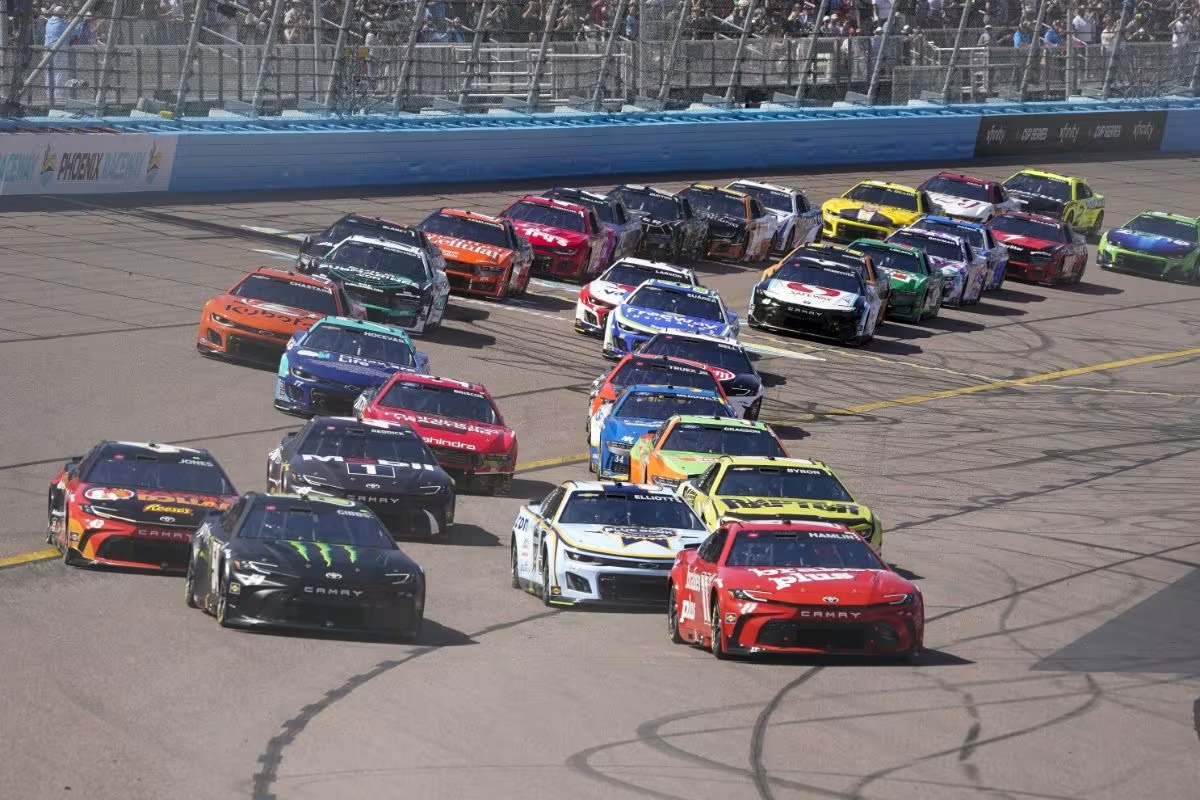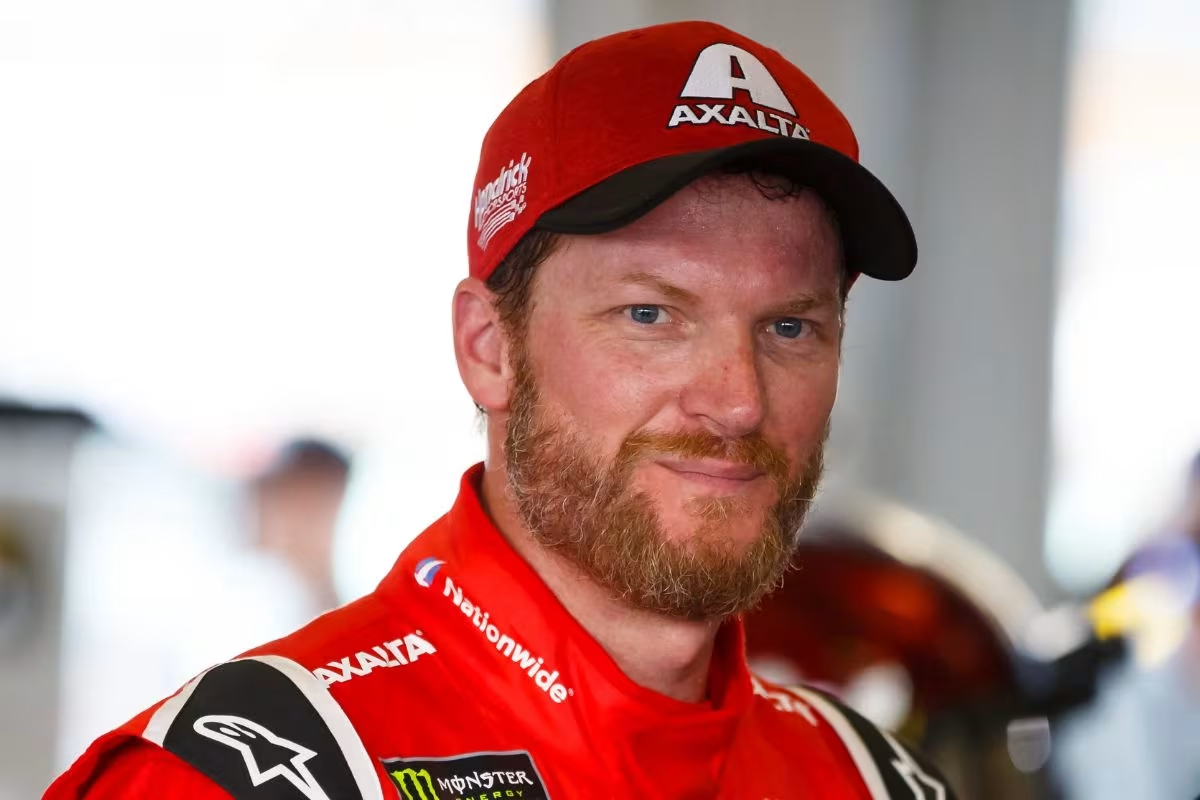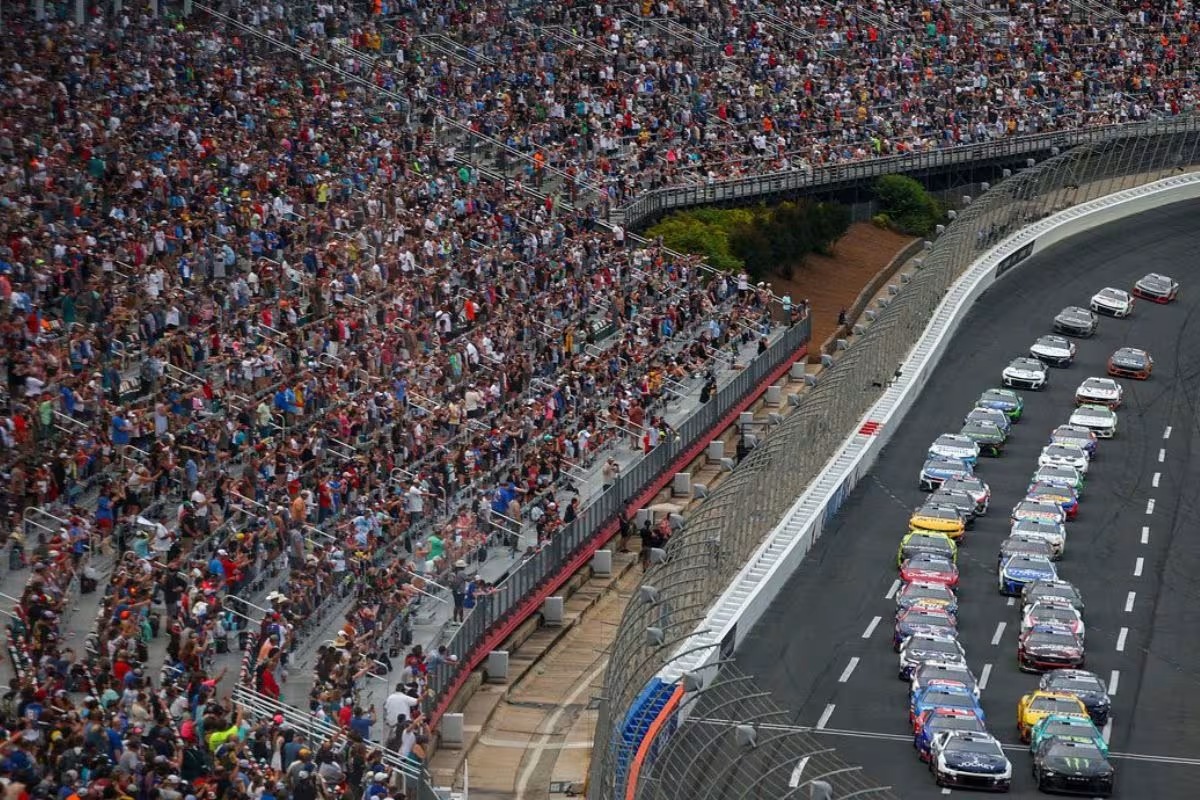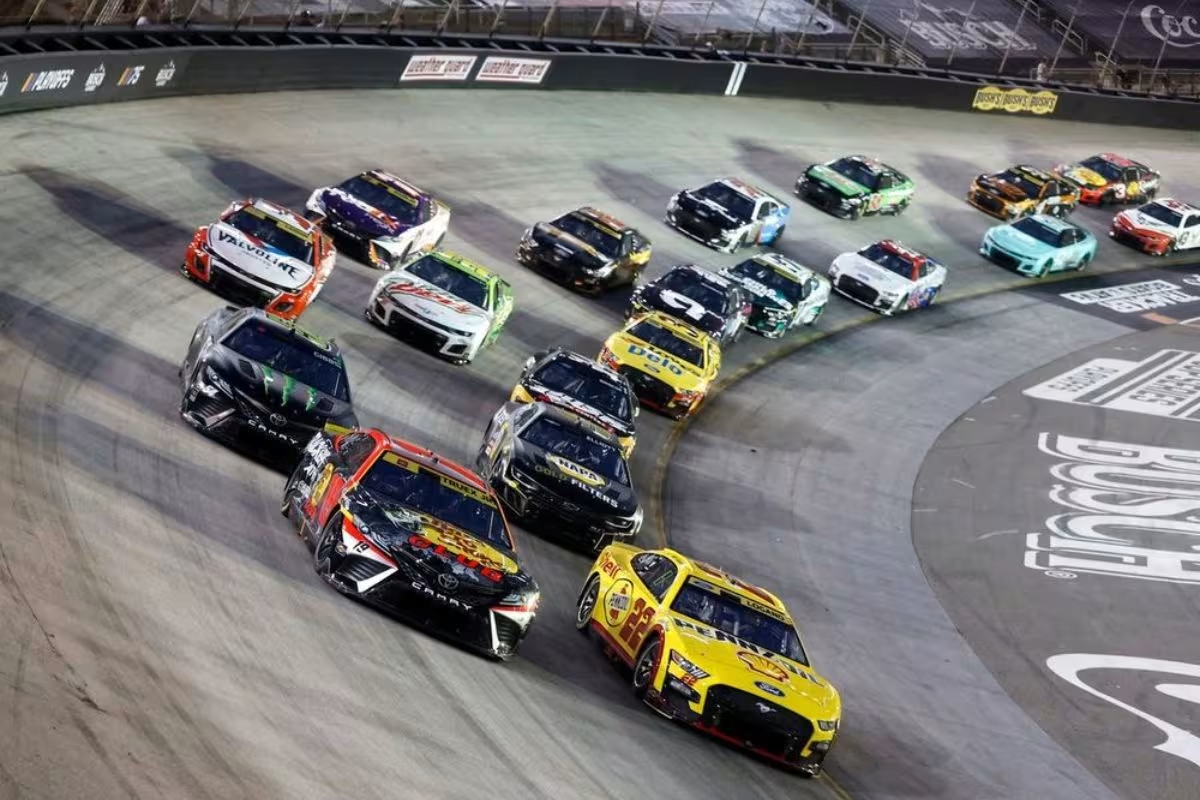Is NASCAR Short-Track Racing Dying: The current landscape of NASCAR short-track racing is increasingly under examination, as industry insiders voice grave concerns over its declining appeal. Figures like Dale Earnhardt Jr. have articulated a growing dissatisfaction with the perceived lack of excitement and unpredictability that once characterized these events. As fan attendance dwindles and social media platforms buzz with discontent, a pressing question arises: what groundbreaking strategies can be implemented to rejuvenate this storied aspect of NASCAR?
Key Highlights
- Declining lead changes and reduced excitement in races indicate a concerning trend for short-track racing in NASCAR.
- Fan dissatisfaction is growing due to lackluster performances from the Next-Gen cars and tire management issues.
- Bristol Motor Speedway faces viability challenges, risking a loss of race dates due to decreasing attendance.
- Industry leaders, including Dale Earnhardt Jr. and Denny Hamlin, advocate for innovative solutions to revitalize short-track racing.
- Immediate actions and fan feedback are essential to improve racing quality and restore enthusiasm among fans.
Dale Earnhardt Jr.’s Dismay Over Short-Track Racing
Dale Earnhardt Jr.’s recent reflections on the state of short-track racing have sparked considerable discussion within the NASCAR community, emphasizing a growing concern among fans and industry insiders alike. His candid remarks, delivered during a September 25 podcast episode, reveal a deep-seated disappointment in the current dynamics of short-track competition, particularly following a lackluster Bristol Cup race that left many diehard fans disenchanted.
Interestingly, Chris Gabehart, the crew chief for the #11 car, echoed some of Earnhardt’s sentiments while simultaneously asserting that the past is irretrievable. His claim that the days of the classic Bristol are over hints at an acceptance of change, albeit one that many fans are unwilling to accept.
Comments from Industry Personnel
Reflecting on the current state of short-track racing, industry personnel have voiced a range of concerns that underscore the diminishing excitement traditionally associated with these venues.
Denny Hamlin’s crew chief recently articulated a sentiment that resonates throughout the paddock: “These are the world’s best stock car teams and drivers. If you don’t give them enough ways to separate themselves, that’s what you’re going to see.” This statement captures the crux of a pervasive issue; the lack of competitive edge in short-track racing has led to diminished fan engagement.
“These are the world’s best stock car teams and drivers. If you don’t give them enough ways to separate themselves, that’s what you’re going to see.”-(hamlin)
Several key factors contribute to this growing discontent:
- Increased Difficulty in Overtaking: The Next-Gen cars have made it tougher for drivers to pass, diminishing the hallmark of short-track racing.
- Predictable Race Outcomes: Many races at tracks like Bristol, Martinsville, and Richmond have become less thrilling, leading to predictable finishes.
- Anomaly of Excitement: The Spring Race at Bristol was identified as an anomaly, suggesting that fans can no longer expect consistent excitement.
- Driver Frustration: As evidenced by crew personnel, there is a growing concern that the current rules and setups stifle the competitive nature of the races.
The effect of these concerns suggests that unless notable changes are made, the essence of short-track racing—its unpredictability and excitement—may continue to erode, leading to a disenchanted fan base and a struggling sport.
Dale Jr. and Chris Gabehart Debate Short-Track Racing
Amidst ongoing discussions about the future of short-track racing, a notable exchange unfolded between Dale Earnhardt Jr. and Chris Gabehart, highlighting the differing perspectives within the NASCAR community.
Dale Jr. expressed his concerns about the viability of iconic short tracks like Martinsville and Bristol, warning that without intervention, their future could be bleak. He articulated a fear that, in a few years, these historical venues could be struggling to maintain relevance within the sport.
“I do not see short track racing surviving this if they (NASCAR) don’t find some solution… It’s not out of the question to think that, you know, in just a few years, the Martinsvilles and the Bristols are going to be really hanging on.”- (jr)
Gabehart’s response appeared to downplay the urgency of the situation, suggesting that the prevailing “doom and gloom” narrative serves to exacerbate the problem rather than clarify potential solutions. He questioned the validity of claims surrounding the short-track product, arguing that while improvements are possible, the past performance metrics do not support a narrative of decline.
“All the doom and gloom is a little thick and aids in perpetuating the problem. Could it be “better?”
“Yes. Has it been “bad” by a lot of validated eye test metrics of the past? No, not really. Does our society sensationalize nearly everything now? Yes. That’s not helping either.”-(gabehart)
This divergence in viewpoints emphasizes the complexity of the short-track discourse.
Dale Jr. seized the opportunity to challenge Gabehart’s stance, referencing his observations from both the race and Gabehart’s post-race interview to demonstrate a shift in perspective. By emphasizing the need for improvement, he implicitly called upon industry leaders, including Gabehart, to take actionable steps toward enhancing the short-track experience for fans.
What’s funny is I kinda formed my opinion here by watching the race AND watching your post-race pit road interview. I guess I read you incorrectly.”
“The short track product can and needs to improve somewhat. You surely can agree. And it’ll be people like you who make that happen.”-(hamlin)
“You deserve more.”-(gabehart)
https://twitter.com/DaleJr/status/1839100735222354075
Gabehart’s subsequent acknowledgment that “you deserve more” suggests a willingness to engage in introspection and a recognition of the notable role that industry insiders must play in revitalizing short-track racing.
“Most of all, I want everyone to know how hard it is to race at the cup level. G7 cars don’t showcase that well enough. Natural cautions should be common at short tracks bc the cars are hard to drive for the world’s best drivers. That should be the goal.”HAMLIN)
This dialogue encapsulates the critical crossroads at which NASCAR finds itself in relation to its short-track heritage.
Fans’ Perspective on Short-Track Quality
The decline in short-track racing quality has become a pressing concern among fans who have grown increasingly vocal about their dissatisfaction. This sentiment is echoed by notable figures within the racing community, including Dale Earnhardt Jr. and Chris Gabehart, who emphasize the need for a more engaging racing experience.
The diminishing excitement during races is becoming too apparent to ignore, leading to a reevaluation of what fans expect from NASCAR’s short-track events.
Key concerns voiced by fans include:
- Reduction in Lead Changes: Recent races, such as the Bristol Night Race, showcased a pronounced decrease in lead changes, reducing the unpredictability that keeps fans on the edge of their seats.
- Next-Gen Car Performance: Many fans attribute the decline in racing excitement to the characteristics of the Next-Gen car, which may not be as conducive to thrilling competition on short tracks.
- Tire Performance Issues: Some believe that Goodyear’s tire performance has impacted the racing dynamics, further contributing to a lack of excitement.
- Community Expectations: As the racing community evolves, so do the expectations; fans are voicing concerns that the current product is not meeting their desires for thrilling competition.
Fans are left yearning for a return to the excitement and unpredictability that once defined short-track racing, underscoring the need for a reevaluation of current practices to revive their enthusiasm.
Concerns for Bristol’s Future
Bristol Motor Speedway stands at a critical crossroads, where the concerns surrounding short-track racing quality converge with the future viability of one of NASCAR’s most iconic venues. Recent commentary from industry insiders, including Sawyer’s candid reflections on SiriusXM NASCAR Radio, highlights the perplexities surrounding tire performance and race dynamics.
“We felt like that we had a recipe there from the spring that gave us what we’re looking for in our short track racing, putting kind of the tire management back in the driver’s hands.”-(SAWYER)
The anticipated return of tire management as a tactical element in racing did not materialize during the recent events, raising fundamental questions about the sustainability of Bristol’s racing product.
Sawyer’s admission that such discrepancies are not uncommon in sports is insightful; however, it does little to assuage the mounting concerns surrounding the track’s competitive integrity. With the alarming possibility of Bristol facing a fate akin to Richmond—losing a race date due to diminishing audience interest—the gravity of the situation cannot be overstated.
“I think the big thing we have to keep in mind is these things happen throughout time, whether it’s a race event or you go into any type of sporting event… You’ll have a blowout every now and then. We just need to figure out what happened, how we’re going to correct it and move forward because we have had some really good short track racing, as well as road course racing… Goodyear’s tire has really contributed a great deal to that.”-(SAWYER)
While attendance figures, such as the 120,000 spectators for this year’s Night Race, appear promising, they are overshadowed by the underlying question: will fans remain engaged if the quality of racing falters?
As NASCAR navigates these turbulent waters, the imperative to identify corrective measures becomes increasingly urgent. The future of Bristol hinges not only on immediate fixes but also on a tactical vision that prioritizes the fan experience.
Without decisive action, the conversations led by figures like Chris Gabehart and Dale Earnhardt Jr. may devolve into lamentations for a once-thriving racing tradition, leaving both the venue and its loyal patrons in a precarious position.
News in Brief: Is NASCAR Short-Track Racing Dying
The current challenges facing NASCAR short-track racing highlights a critical juncture in the sport’s evolution. Industry experts and fans alike express concern regarding diminishing excitement and engagement, prompting calls for creative solutions. Without a concerted effort to revitalize the racing experience and address the aspirations of fans, the future of short-track racing may be jeopardized. Revitalization strategies must prioritize fan engagement to guarantee the continued relevance and sustainability of this storied tradition in motorsport.
ALSO READ: NASCAR’s Next-Gen Fix: Why Speedways Are Still in Danger




